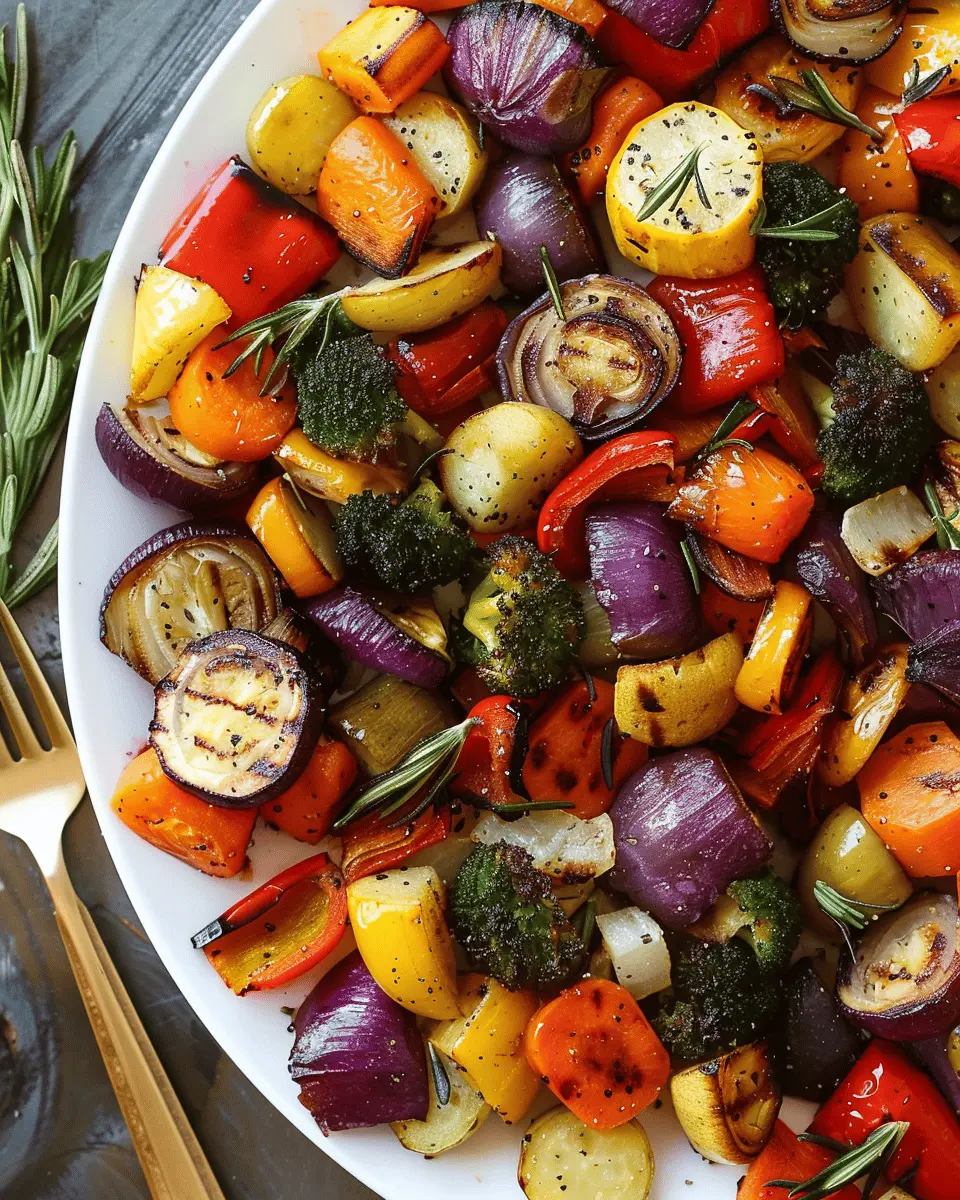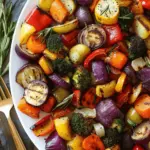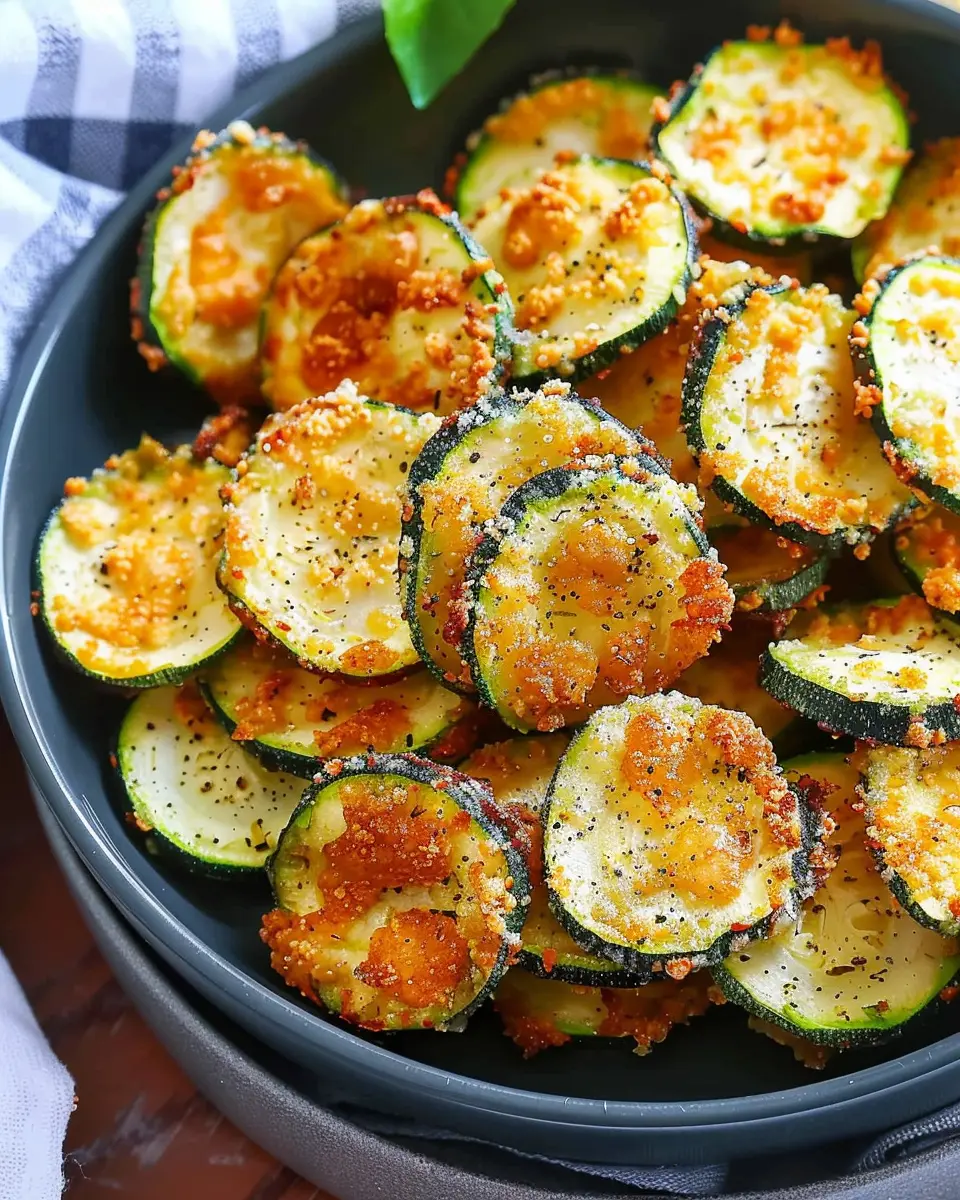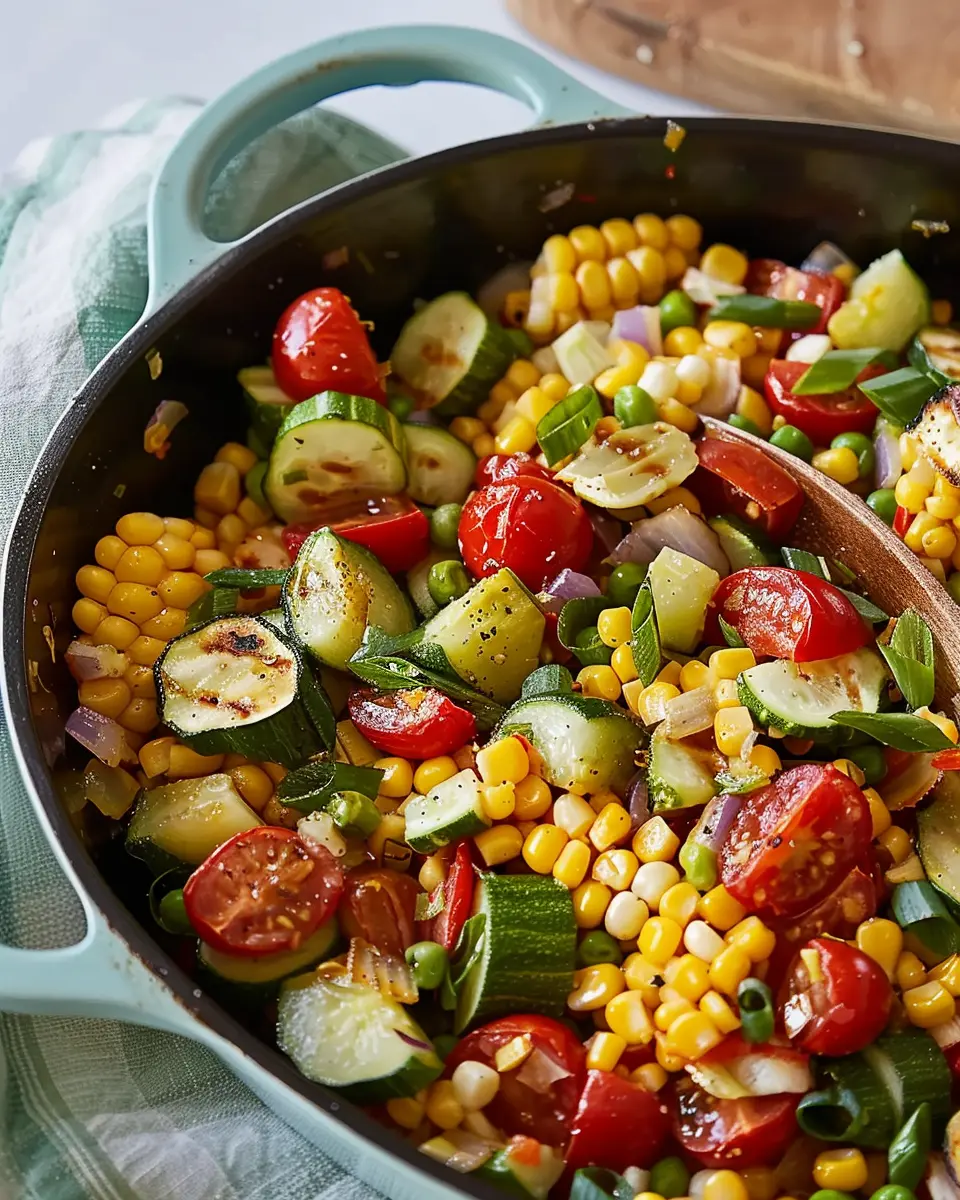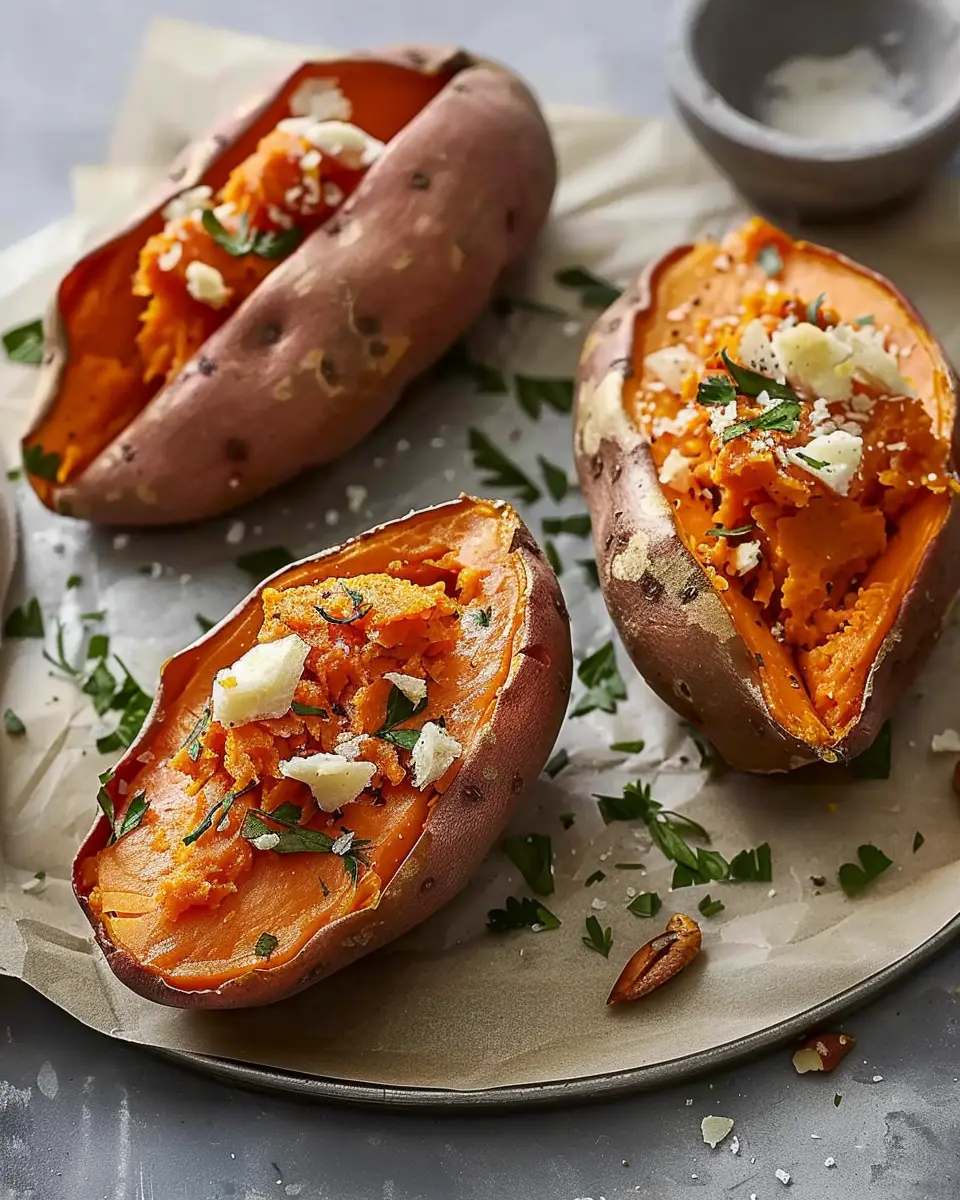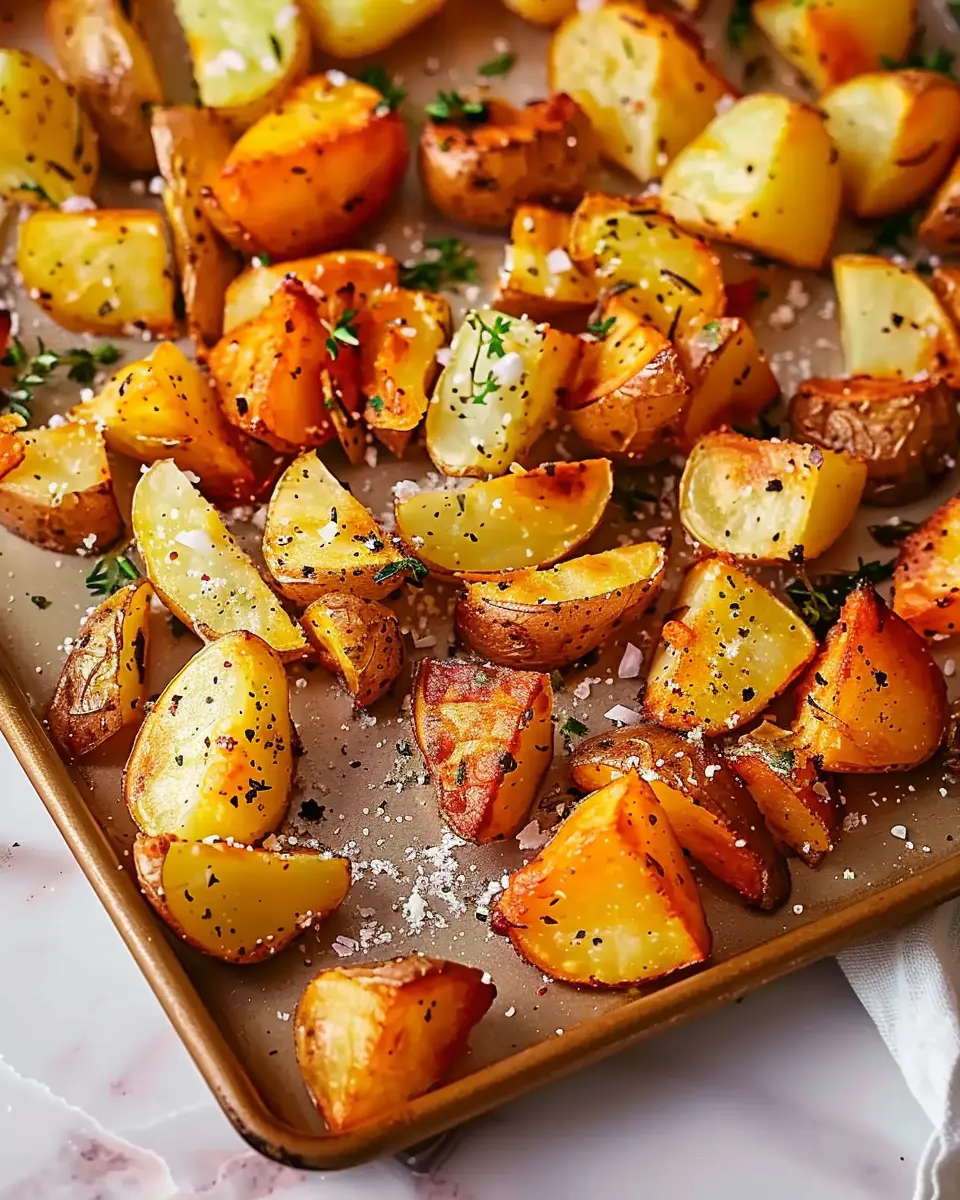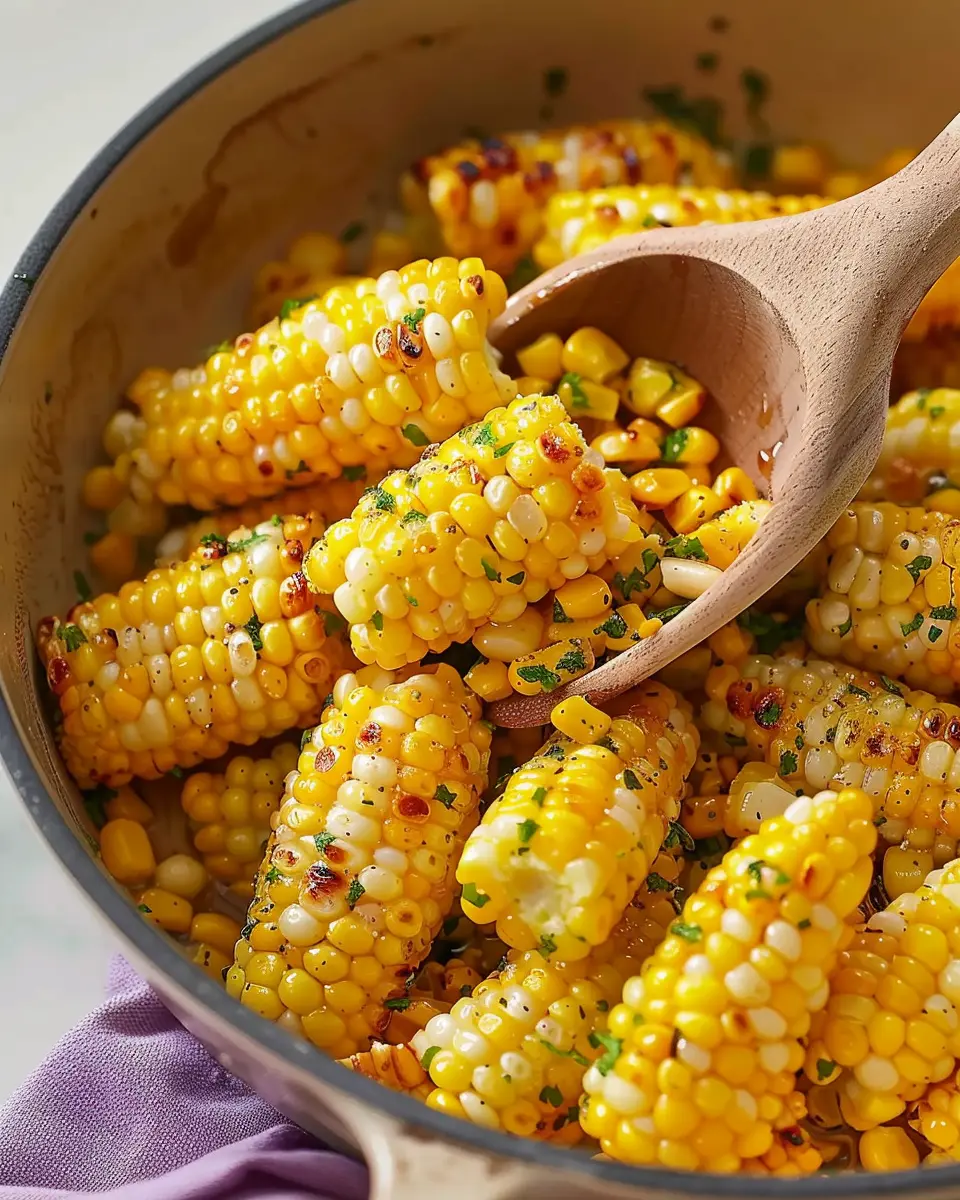Introduction to Roasted Vegetables
Roasted vegetables have become a staple in many households, and for good reason! But before we dive into the tantalizing recipe, let’s explore why roasted vegetables deserve a place in your cooking repertoire.
Why Choose Roasted Vegetables?
There’s something magical that happens when you roast vegetables. The process intensifies their flavors and brings out their natural sweetness. From bell peppers to zucchini, all kinds of veggies shine in the oven’s warmth. Plus, it’s an incredibly flexible method—swap in your favorites or whatever you have chilling in the fridge.
- Flavor Enhancement: Roasting caramelizes the sugars in vegetables, giving them a rich, complex flavor profile. Imagine sinking your teeth into crispy edges backed by soft, tender centers.
- Health Benefits: Roasted vegetables are a healthy choice too. According to the USDA, incorporating a variety of colorful vegetables can boost your nutrient intake and enhance overall health. They’re low in calories yet high in vitamins and minerals.
Check out sites like Healthline for more insights on the benefits of adding more vegetables to your diet.
The Benefits of Cooking at Home
Now, why is cooking at home such a game-changer? For one, it saves you money, and let’s be honest—who doesn’t want to save a few bucks? Preparing meals gives you control over the ingredients. You can avoid the unwanted extras often found in takeout or pre-packaged meals.
- Enhanced Skills: Cooking regularly helps you develop skills and try new recipes. Think of all the culinary joys waiting for you to discover!
- Customization: Cooking allows you to tailor dishes to suit your tastes and dietary needs. Love spicy food? Throw in an extra pinch of chili powder.
Imagine inviting friends over for a cozy dinner featuring your homemade roasted vegetables alongside Turkey Bacon or Chicken Ham. That’s the kind of meal that fosters good conversation and laughter—a perfect way to connect and unwind after a busy week.
In short, embracing roasted vegetables and cooking at home is a delightful way to elevate your meals, keep your health in check, and enjoy the rewarding process of creating something delicious! So, are you ready to get roasting?
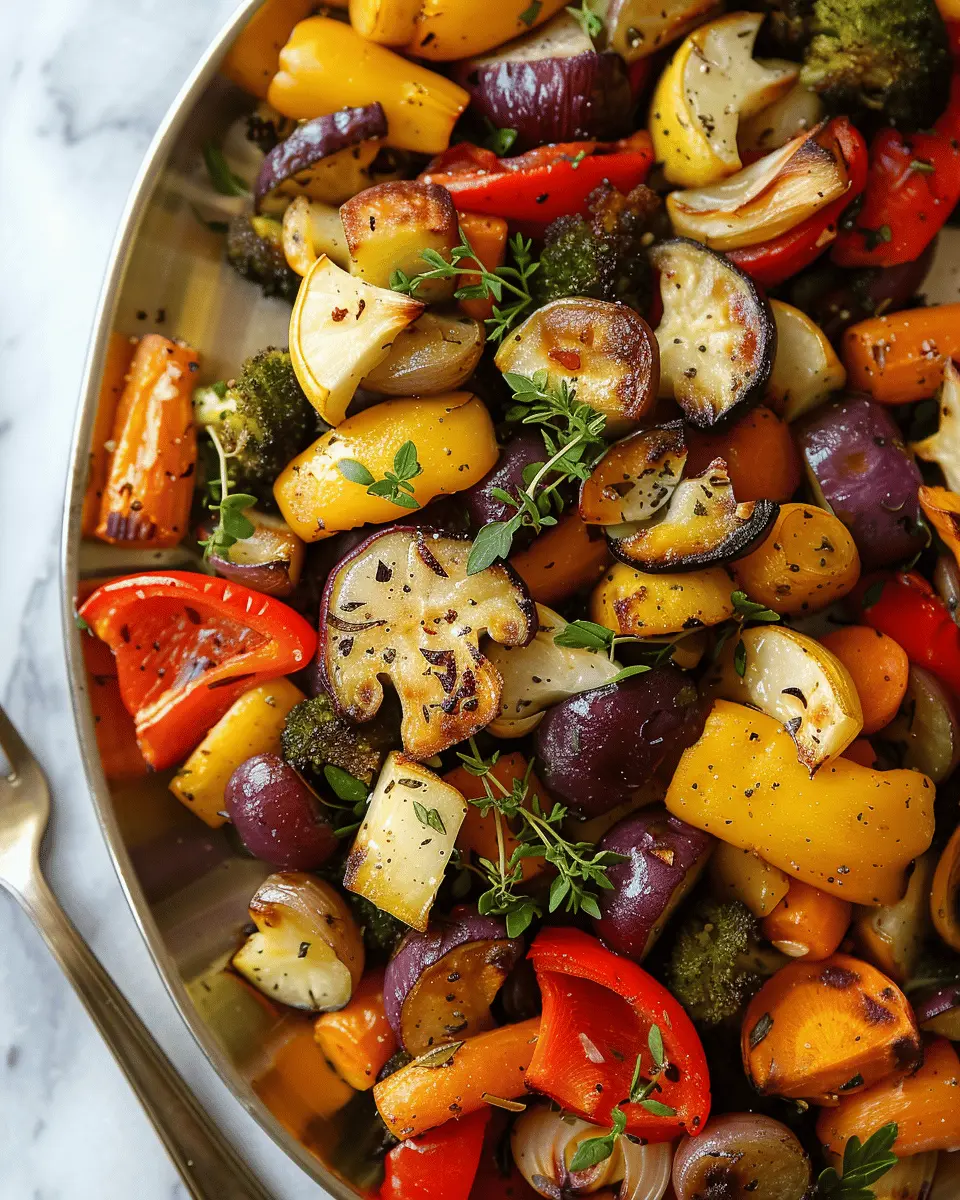
Ingredients for Roasted Vegetables
Essential Veggies for Roasting
When it comes to roasted vegetables, you really can’t go wrong. Start with your favorites! Here’s a winning list to kick off your roasting adventure:
- Carrots: Naturally sweet when roasted, they caramelize beautifully.
- Brussels Sprouts: These little cabbages transform into crispy bites of heaven.
- Bell Peppers: Their vibrant colors add joy and sweetness.
- Zucchini: Soft and creamy when roasted, they absorb flavors nicely.
- Red Onions: Sweet and tangy, they add depth and complexity.
Feel free to mix and match! You might discover a surprising flavor combination that becomes your new favorite.
Flavorful Additions
Enhancing your roasted vegetables can take them from good to absolutely delightful. Consider these flavorful additions:
- Herbs: Fresher is better! Think rosemary, thyme, or oregano for that aromatic touch.
- Spices: A dash of garlic powder, paprika, or even cayenne can amp up the flavor.
- Turmeric: Not just vibrant, it’s also packed with anti-inflammatory benefits.
- Turkey Bacon or Chicken Ham: Need a protein boost? Crispy bits of turkey bacon or chicken ham add umami and texture.
Don’t forget to check out this excellent resource on cooking techniques for more inspiration! When you roast, you not only elevate your veggies but also elevate your culinary skills. Happy roasting!
Step-by-step Preparation for Roasted Vegetables
Roasted vegetables are a fabulous way to bring out the natural sweetness and flavors in your produce. Whether you’re preparing a side dish for dinner, or a tasty addition to a grain bowl, mastering the art of roasting vegetables is a game-changer in any kitchen. Let’s walk through the essential steps to get those vibrant, caramelized veggies ready to serve!
Gather Your Ingredients
Before you can dive into the glorious world of roasted vegetables, you need to gather your ingredients. Fresh vegetables are key! Here’s a shortlist to get you started:
- Root vegetables: Carrots, sweet potatoes, and beets
- Cruciferous veggies: Broccoli, cauliflower, and Brussels sprouts
- Alliums: Onions and garlic (these add fantastic depth)
- Seasoning essentials: Olive oil, salt, pepper, and your choice of herbs or spices
While you can collaborate with many vegetables, aim for a variety of colors and textures to create a dish that’s visually appealing and packed with flavor. If you’d like to take your selection even further, consider checking out this list of the best seasonal vegetables from the National Seasonal Produce Guide.
Prep Your Vegetables
Once you’ve gathered everything, it’s time to prep your vegetables. This step is crucial for ensuring even cooking. Start by washing and drying your veggies thoroughly. Depending on the vegetable, here’s how you can cut them:
- Chunky pieces: Root vegetables like carrots and sweet potatoes should be cut into hearty chunks, about 1-2 inches.
- Smaller florets: For broccoli and cauliflower, separate them into smaller florets for quicker roasting.
- Uniform sizes: Make sure all pieces are similar in size for even cooking. This helps prevent some pieces from being overcooked while others are still crunchy.
Seasoning Essentials
Now that your veggies are prepped, it’s time to bring them to life with seasoning. In a large bowl, combine your chopped vegetables with:
- Olive oil (about 2-3 tablespoons)
- Salt (to taste)
- Freshly cracked pepper
- Optional: herbs like rosemary or thyme, or spices like paprika or garlic powder
Coat the vegetables evenly with the olive oil and seasonings. The oil not only helps with flavor but also contributes to that delightful golden crust we all love. Don’t be shy! This is about enhancing the natural flavors of your vegetables.
Preheat Your Oven
Next up, it’s time to preheat your oven. Ideally, you’ll want to set it to 425°F (220°C). Preheating ensures that your veggies start cooking immediately, which is vital for achieving that beautiful caramelization. While the oven warms up, you can take a moment to tidy up your workspace, because cooking should also be about enjoying the moment!
Roasting Techniques
Once your oven is hot and your veggies are seasoned, it’s time to roast! Spread your prepared vegetables in a single layer on a baking sheet lined with parchment paper. This prevents sticking and makes cleanup a breeze. Overcrowding the pan can lead to steaming rather than roasting, so give your veggies some space.
Set your timer for about 25-30 minutes, and halfway through, give them a good toss. This helps them brown evenly. If you’re feeling adventurous, you might even try adding a sprinkle of turkey bacon or chicken ham about five minutes before they’re done for an extra flavor boost.
Checking for Doneness
The last step is the most satisfying—checking for doneness! Your roasted vegetables are ready when they’re fork-tender and beautifully caramelized. To gauge readiness:
- Fork test: Should pierce through easily.
- Visual check: Look for golden edges and a slight wrinkling.
If they’re not quite there yet, pop them back in the oven for a few more minutes, keeping a close eye. Remember, a little patience goes a long way in getting that perfect roast.
And there you have it! With these simple steps, you’re well on your way to mastering the art of delicious roasted vegetables. Now, get cooking and enjoy the vibrant flavors of your labor!
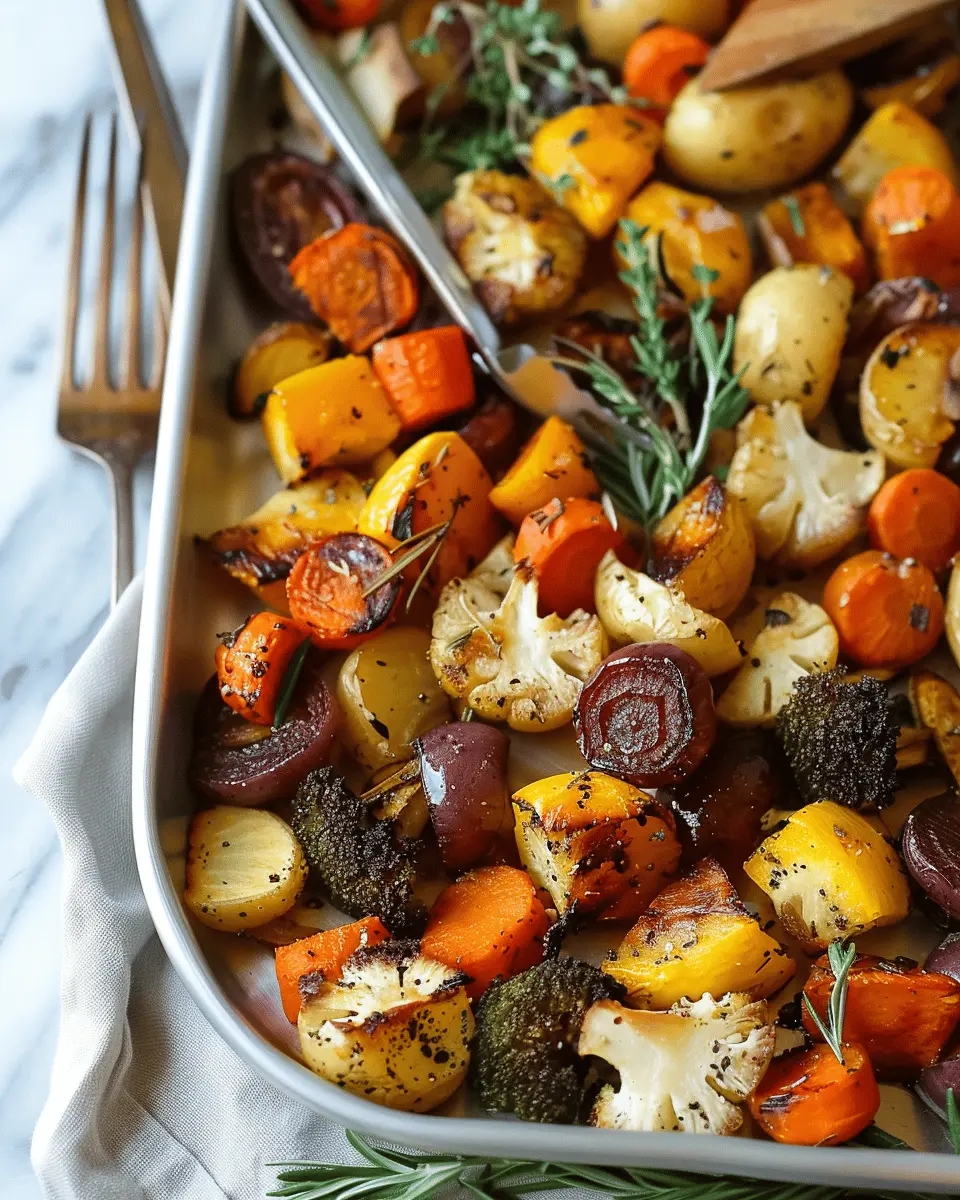
Variations on Roasted Vegetables
Roasted vegetables are a culinary canvas, offering countless variations that can elevate your dishes to new heights. Let’s dive into some delightful twists on this beloved technique.
Seasonal Roasted Vegetables
Embrace the season by using whatever fresh produce is available. In spring, think vibrant asparagus and sweet peas, while summer shines with zucchini and cherry tomatoes. Autumn invites rich root vegetables like carrots, squash, and turnips, and winter is perfect for hearty Brussels sprouts and parsnips. Selecting seasonal roasted vegetables not only enhances flavor but also supports local farmers. You can explore seasonal guides at places like Eat Seasonably for inspiration!
International Flavor Profiles
Why stick with the usual when global cuisines offer so much? Try a Mediterranean twist by adding olives, garlic, and lemon zest to your roasted vegetables. Or, give them an Asian flair with soy sauce, ginger, and sesame oil. For a warm, comforting taste, sprinkle some curry powder for a delicious Indian vibe. Each of these flavor profiles brings something unique to your table, ensuring your meals never get dull.
Add-ins for Extra Nutrition
Looking to incorporate more nutrition into your roasted vegetables? Consider adding:
- Turkey bacon or Chicken ham: These lean meats can add protein without extra fat.
- Nuts and seeds: Toasted almonds, walnuts, or pumpkin seeds introduce healthy fats and a satisfying crunch.
- Legumes: Chickpeas or lentils can bulk up your dish while offering a hearty source of fiber and protein.
By experimenting with these variations, you can create a balanced meal that’s not only tasty but also packed with nutrients. So, what new combinations will you try next? Your taste buds deserve the adventure!
Cooking Tips and Notes for Roasted Vegetables
Key Notes on Roasting Times
Getting the timing right is essential for perfectly cooked roasted vegetables. Generally, they take about 20 to 35 minutes in a preheated oven at 425°F (220°C), but keep an eye on those crunchier veggies like carrots and beets—they might take a bit longer. To ensure even cooking, all vegetables should be cut into uniform sizes. For a great resource on roasting times for specific veggies, check out this detailed guide from Serious Eats.
Troubleshooting Common Issues
If your roasted vegetables seem soggy instead of crisp, it might be due to overcrowding the baking sheet. Leave space for air to circulate! Another common problem is uneven cooking; stirring the veggies halfway through can help achieve a lovely golden-brown finish. And if they’re too bland, don’t hesitate to experiment with fresh herbs or zesty citrus juice for a punch of flavor.
By keeping these tips in mind, you’ll create delicious, vibrant roasted vegetables that everyone will enjoy!
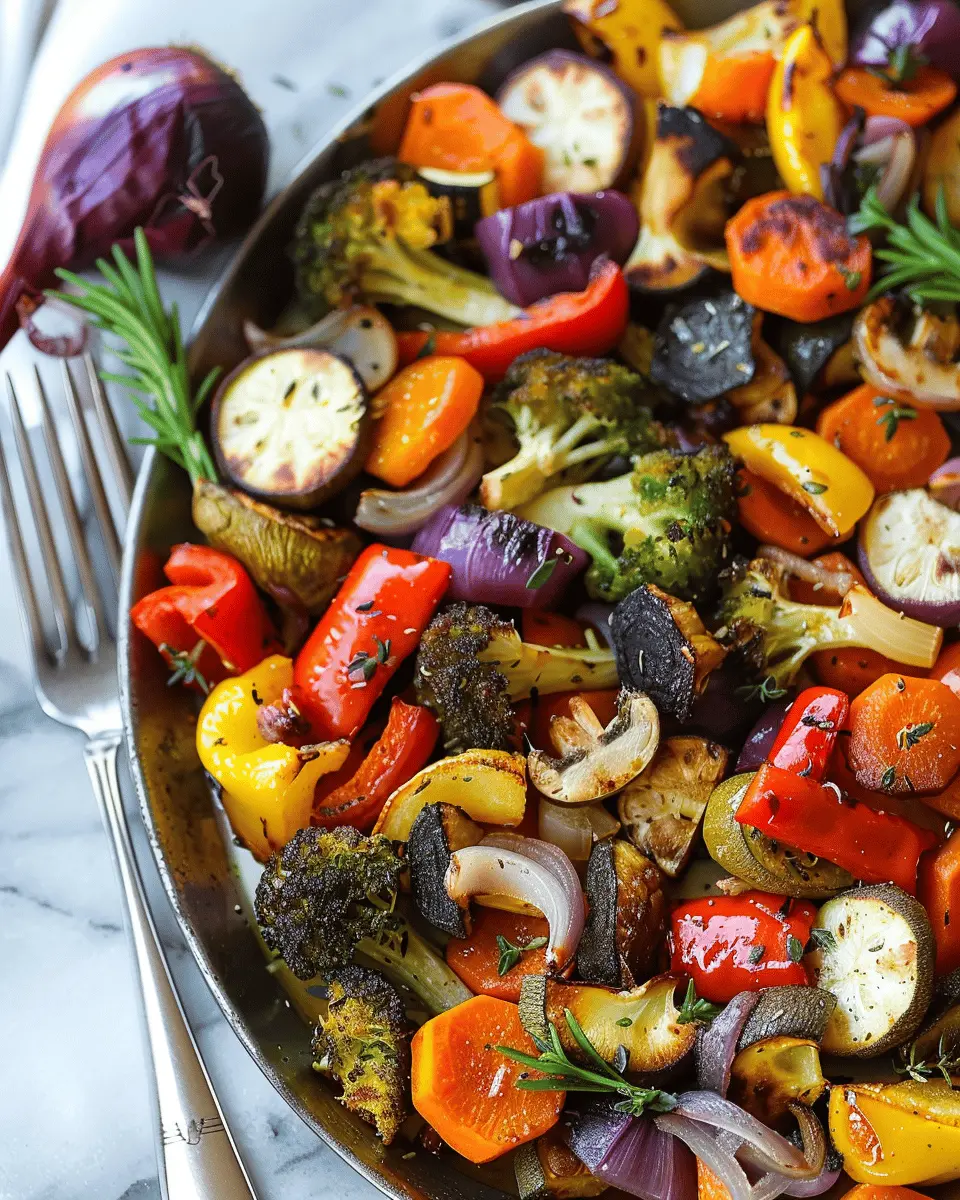
Roasted Vegetables: The Best Easy Recipe for Flavorful Sides
Learn how to make perfect roasted vegetables that are bursting with flavor and make a perfect side dish.
- Prep Time: 15 minutes
- Cook Time: 30 minutes
- Total Time: 45 minutes
- Yield: 4 servings 1x
- Category: Side Dish
- Method: Roasting
- Cuisine: American
- Diet: Vegan
Ingredients
- 2 cups assorted vegetables (carrots, bell peppers, zucchini)
- 3 tablespoons olive oil
- 1 teaspoon salt
- 1/2 teaspoon black pepper
- 1 teaspoon garlic powder
- 1 teaspoon dried herbs (thyme, rosemary)
Instructions
- Preheat the oven to 425°F (220°C).
- Cut the vegetables into even-sized pieces.
- In a large bowl, toss the vegetables with olive oil, salt, pepper, garlic powder, and dried herbs.
- Spread the vegetables out in a single layer on a baking sheet.
- Roast for 25-30 minutes, or until tender and golden, stirring halfway through.
- Remove from the oven and serve hot.
Notes
- For even cooking, try to cut all the vegetables to the same size.
- Feel free to customize with your favorite vegetables.
Nutrition
- Serving Size: 1 cup
- Calories: 150
- Sugar: 3g
- Sodium: 300mg
- Fat: 7g
- Saturated Fat: 1g
- Unsaturated Fat: 6g
- Trans Fat: 0g
- Carbohydrates: 20g
- Fiber: 5g
- Protein: 3g
- Cholesterol: 0mg
Keywords: Roasted Vegetables
